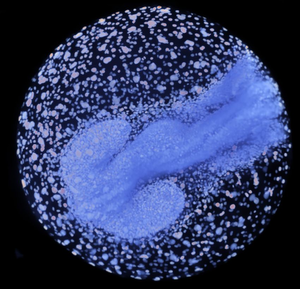Information
- Publication Type: PhD-Thesis
- Workgroup(s)/Project(s):
- Date: August 2015
- Date (Start): 1. September 2011
- Date (End): 24. August 2015
- TU Wien Library:
- Second Supervisor: Prof. RNDr. Karol Mikula
- 1st Reviewer: Prof. Ing. Miloš Šrámek
- 2nd Reviewer: Doc. RNDr. Peter Frolkovic
- Rigorosum: 24. August 2015
- First Supervisor: Prof. RNDr. Daniel Ševcovi
Abstract
In this work, we present a few modifications to the state-of-the-art algorithms, as well as several novel approaches, related to the detection of cells in biological image processing.We start by explanation of a PDE-based image processing evolution called FBLSCD and study its properties. We then define a fully automatic way of finding the stop time for this evolution. Afterwards, we try to see the FBLSCD as a morphological grayscale erosion, and we formulate a novel cell detection algorithm, called LSOpen, as an intersection of PDE-based and morphological image processing schools.
Then, we discuss the best ways of inspecting cell detection results, i.e. cell identifiers. We try to quantitatively benchmark various cell detection methods by the relative amount of false positives, false negatives and multiply-detected centers yielded. We will observe that comparing cell detection results in a binary fashion is insufficient, therefore we are going to utilize the concept of distance function.
Motivated by this need for robust cell detection result comparison, we analyze commonly-used methods for computing the distance function and afterwards we formulate a novel algorithm. This one has complexity O(n log2 n) and it yields Euclidean distance. In addition to that, we introduce a modification to this algorithm, enabling it to work also in maze-like, wall- and corner-containing, environments.
This modification relies on the line rasterization algorithm. We perform various experiments to study and compare distance function methods. Results illustrate the viability of newly-proposed method.
Further, a software for the comparing and inspecting cell detection results, SliceViewer, is specified, designed, implemented and tested.
In the end, quantitative experiments are discussed, validating the above-mentioned novelties.
Additional Files and Images
Weblinks
No further information available.BibTeX
@phdthesis{Smisek_Michal_A3D,
title = "Analysis of 3D and 4D Images of Organisms in Embryogenesis",
author = "Michal Sm\'{i}\v{s}ek",
year = "2015",
abstract = "In this work, we present a few modifications to the
state-of-the-art algorithms, as well as several novel
approaches, related to the detection of cells in biological
image processing. We start by explanation of a PDE-based
image processing evolution called FBLSCD and study its
properties. We then define a fully automatic way of finding
the stop time for this evolution. Afterwards, we try to see
the FBLSCD as a morphological grayscale erosion, and we
formulate a novel cell detection algorithm, called LSOpen,
as an intersection of PDE-based and morphological image
processing schools. Then, we discuss the best ways of
inspecting cell detection results, i.e. cell identifiers. We
try to quantitatively benchmark various cell detection
methods by the relative amount of false positives, false
negatives and multiply-detected centers yielded. We will
observe that comparing cell detection results in a binary
fashion is insufficient, therefore we are going to utilize
the concept of distance function. Motivated by this need
for robust cell detection result comparison, we analyze
commonly-used methods for computing the distance function
and afterwards we formulate a novel algorithm. This one has
complexity O(n log2 n) and it yields Euclidean distance. In
addition to that, we introduce a modification to this
algorithm, enabling it to work also in maze-like, wall- and
corner-containing, environments. This modification relies
on the line rasterization algorithm. We perform various
experiments to study and compare distance function methods.
Results illustrate the viability of newly-proposed method.
Further, a software for the comparing and inspecting cell
detection results, SliceViewer, is specified, designed,
implemented and tested. In the end, quantitative
experiments are discussed, validating the above-mentioned
novelties. ",
month = aug,
address = "Favoritenstrasse 9-11/E193-02, A-1040 Vienna, Austria",
school = "Institute of Computer Graphics and Algorithms, Vienna
University of Technology ",
URL = "https://www.cg.tuwien.ac.at/research/publications/2015/Smisek_Michal_A3D/",
}

 Thesis
Thesis
